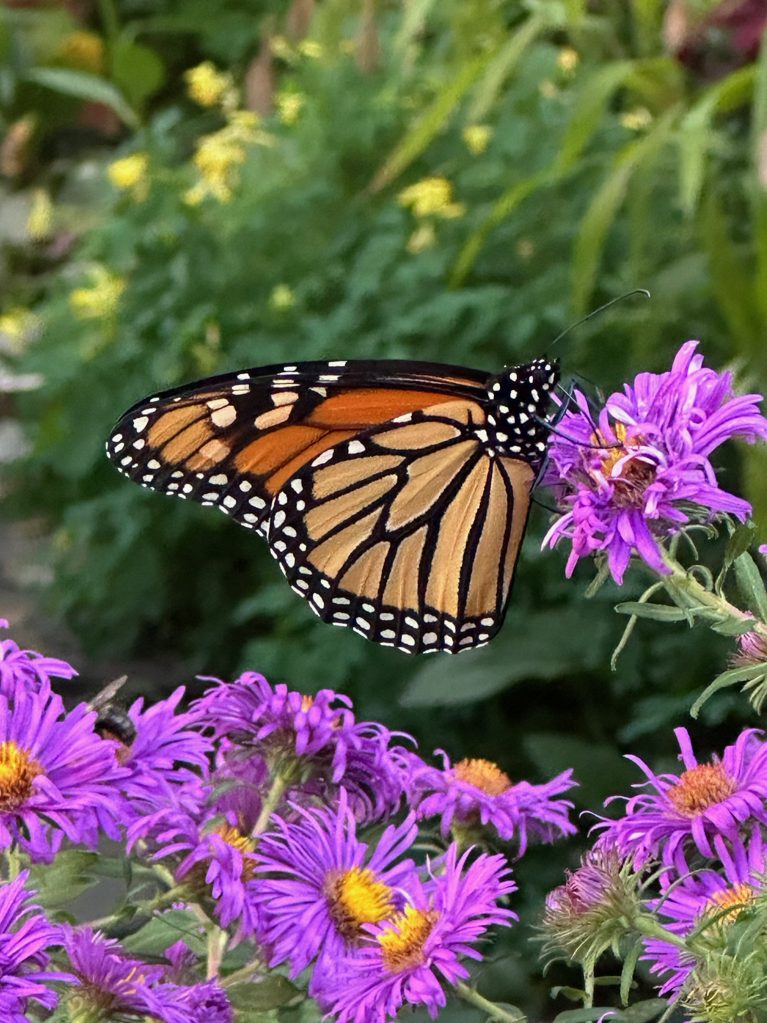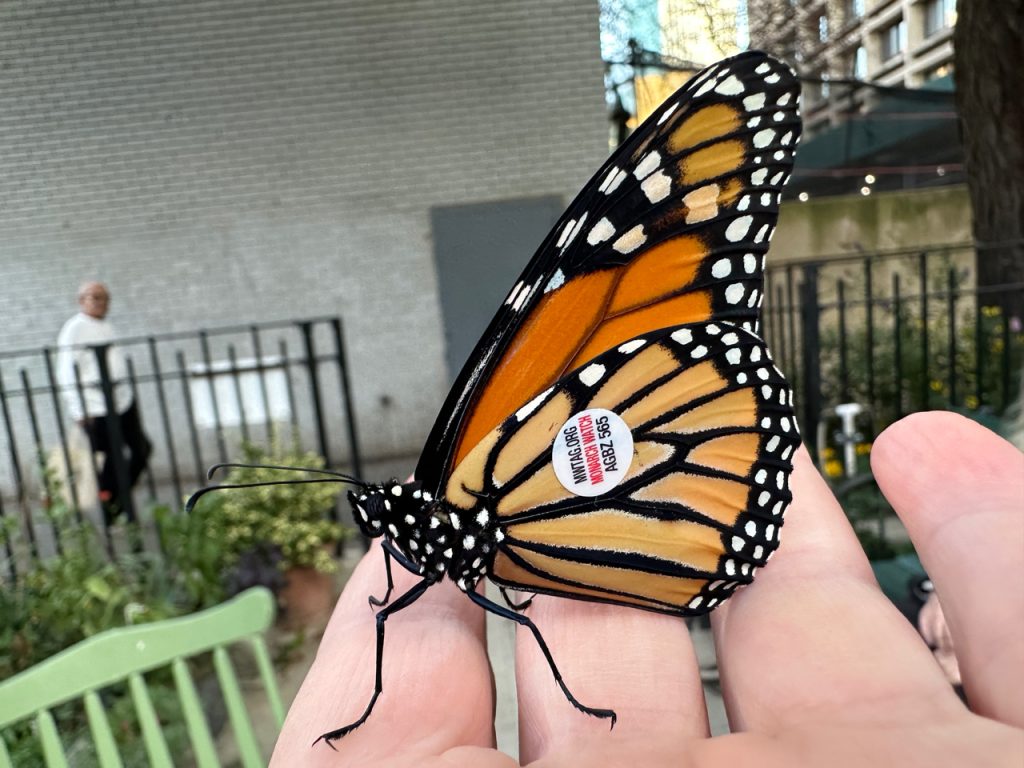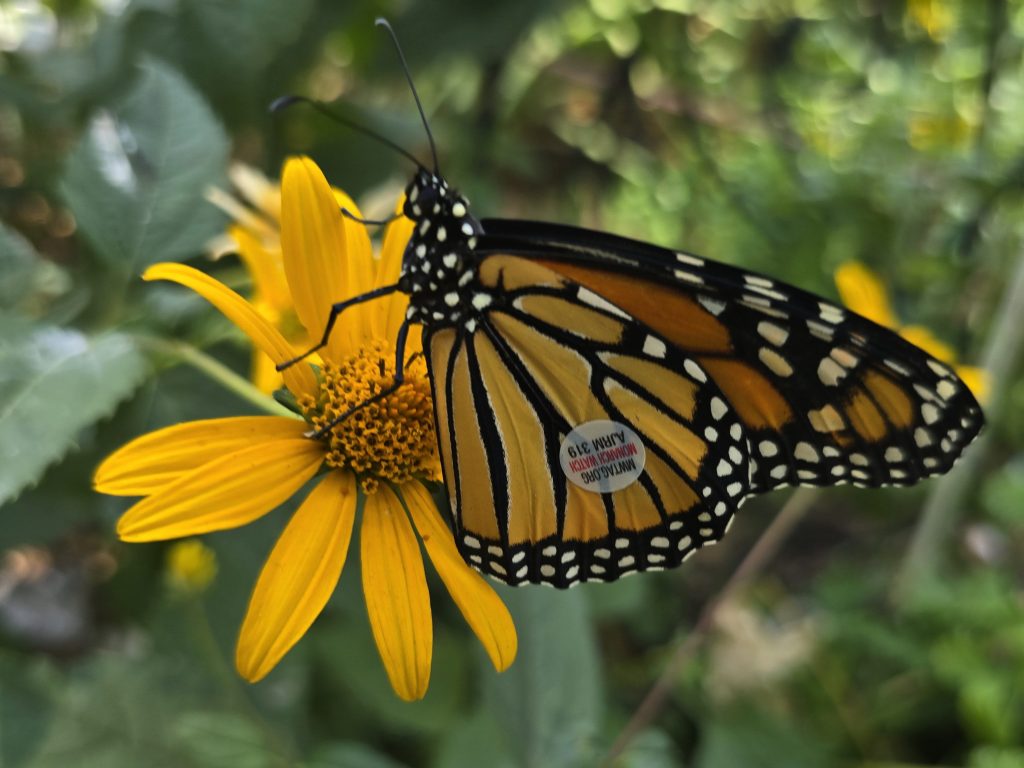As in previous years, Johannes, our butterfly expert, collected eggs and small caterpillars of monarch butterflies to let them grow up in a safe environment (his apartment), free of predators and parasites. This is not an easy feat! Each little larva needs fresh milkweed to eat all the time; and as we all know, caterpillars are very very hungry. When they have grown up, they need just the right place to pupate. Finally, the adult butterflies needs a safe place to dry out their new wings before they can go out into the world. Considering all of this, it is amazing that Johannes could raise a stunning number of 159 monarchs this year!
Johannes often recruits garden members or neighbors and their children to help him let the young butterflies fly.



In late August and September, when the season ends, monarchs are preparing for their fall migration. The butterflies that hatch at this time of the year are larger and stronger than earlier ones. They also don’t have developed ovaries or testes. Their entire body is tuned for flying.
For the longest time, it was a complete mystery where monarchs go in winter. Now, we know that they fly all the way to Mexico. Scientists found out about this because people applied a small tag to a wing of tens of thousands of monarchs in the hope that some of them would be found later somewhere else on the migration route. And it worked. A few monarchs tagged in the northern part of America were found in cool mountain forests in Mexico, where millions of them are roosting on the branches of fir trees. They stay there until Spring. Then, they fly back north until they reach a place in Florida or Texas where milkweed is growing. There, the next generation of monarchs grows up. When these are adult, they fly further north. It takes several generations until the butterflies reach New York again. This is why we don’t see them until July.
The mystery of the monarch migration is still not fully solved. For one thing, we don’t know by which route Monarchs reach their winter homes and how they know where they have to go. After all, no butterfly that is embarking on this journey has ever done it before. More tagging is needed to find out.
Of course, the scientists can’t tag so many butterflies all by themselves. They enlist regular people to help with this task. These citizen scientists are often school children and students, but also gardeners at LaGuardia Corner Garden! This year, we tagged about 70 male and female migrating monarchs. If we are very lucky, one of them will be found by another citizen scientists somewhere between here and Mexico. We would be more than thrilled.


